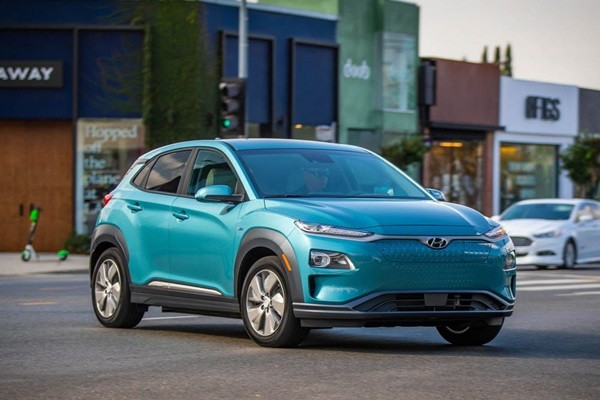Hyundai Motor Company is planning to launch V2G (Vehicle to Grid) electric vehicles that can use electricity stored in a battery of another electric vehicle.
Not only V2G system can reduce maximum amount of electricity used by buildings by supplying electricity, it can also prevent power outage and even resell electricity. Basically, a vehicle will act as a type of a moving ESS (Energy Storage System). Because V2G system is needed more by foreign countries rather than South Korea where electrical grids are stable, it is expected that the market for it will be much bigger in foreign countries.
According to the industry, Hyundai Motor Company is planning to add a V2G trim to “KONA Electric” and “IONIQ Electric” that will go into production starting from next month at the earliest. Hyundai Motor Company will be the second auto maker to add a V2G trim to its electric vehicle after Nissan added a trim to “Leaf”. However, Nissan only has one commercialized electric vehicle model. On the other hand, Hyundai will add a trim to five different models at the most and provide wide selections for its consumers.
Initially, Hyundai was planning to apply the V2G technology to its first next-generation electric vehicle “NE” that will be launched next year. However, it decided to apply the technology to its current electric vehicles and launch them.
V2G system uses idle electricity while a vehicle is parked and charges a vehicle through electrical grids and it can send remaining electricity back to electrical grids used for households or buildings.
60kWh electricity that is stored in one electric vehicle is equivalent to the amount of energy that can be used by five households (four members) in one day. 100,000 V2G electric vehicles can secure 500MW worth of electricity that is equivalent to the amount of energy generated by one thermal power plant.

V2G system can also resell electricity. For example, when a vehicle is charged during nighttime when electricity rate is the cheapest and its stored electricity is resold during daytime in summer or winter when electricity rate is the most expensive, the vehicle’s owner can make a profit at least threefold.
The technology developed by Hyundai Motor is designed so that it can charge and discharge electricity up to 10kW based on American standards. On-board charger is improved so that DC (Direct Current) and AC (Alternating Current) are changed into bi-directional currents, and bi-directional electricity control circuits such as “AC-DC converter” and boost and buck converter are applied in order to be synchronized to electrical grids such as voltage and power frequency. Also, bi-directional meter that is the size of an adult’s fist is attached to V2G charging cable so that it can perform a stable measurement on charge and discharge.
“Just four to five V2G electric vehicles can satisfy the amount of electricity used by a large building and V2G system can reduce expenses used by construction equipment that operates during daytime when electricity rate is at its peak.” said a representative for the industry. “V2G system’s effectiveness can be maximized in Europe and Japan where power supply and demand is unstable and electricity rate difference is anywhere from five times to nine times.”
“Although we are planning to launch V2G electric vehicles, it is difficult for us to tell the public whether the technology can be applied to current electric vehicles.” said a Hyundai Motor spokesperson.
Meanwhile, about 6,000 to 7,000 people in the world own V2G-based “Leaf” and most of them are from Japan.
Staff Reporter Park, Taejoon | gaius@etnews.com